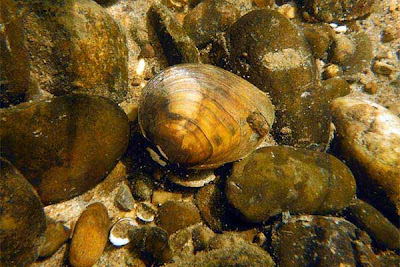BLANDING'S TURTLE |
| This medium-sized freshwater turtle inhabits wetlands in parts of the upper Midwest, New York, New England and southern Canada. Throughout the Northeast, populations appear to be declining. More |
Bristol County Agricultural High School students have partnered with the U.S. Fish and Wildlife Service and others to help nurture Blanding’s turtles, considered threatened in Massachusetts, and later release them with a greater likelihood of survival at Assabet River National Wildlife Refuge in Sudbury, Mass.
The program, intended to establish a new population at the refuge, involves collecting hatchlings in the wild, raising them in captivity and releasing them back in the wild when the turtles are large enough to survive most predation. Head-start programs are one of many tools that the Service considers in the conservation of species like the Blanding's turtle.
Over the last three years, Bristol Aggie teacher Brian Bastarache and Stephanie have led students in releasing more than 150 turtles. This year's release was on May 23.







